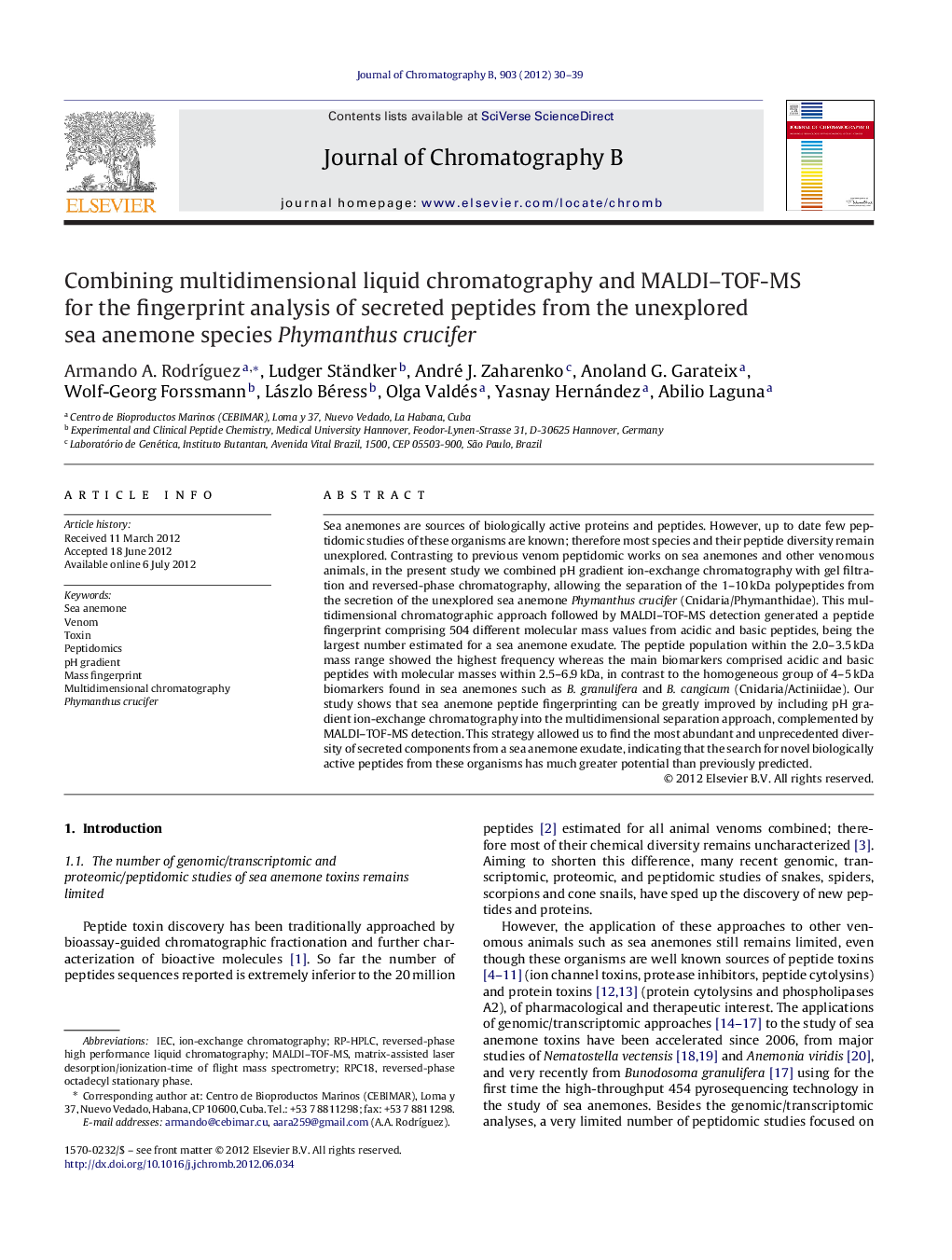| Article ID | Journal | Published Year | Pages | File Type |
|---|---|---|---|---|
| 1216788 | Journal of Chromatography B | 2012 | 10 Pages |
Sea anemones are sources of biologically active proteins and peptides. However, up to date few peptidomic studies of these organisms are known; therefore most species and their peptide diversity remain unexplored. Contrasting to previous venom peptidomic works on sea anemones and other venomous animals, in the present study we combined pH gradient ion-exchange chromatography with gel filtration and reversed-phase chromatography, allowing the separation of the 1–10 kDa polypeptides from the secretion of the unexplored sea anemone Phymanthus crucifer (Cnidaria/Phymanthidae). This multidimensional chromatographic approach followed by MALDI–TOF-MS detection generated a peptide fingerprint comprising 504 different molecular mass values from acidic and basic peptides, being the largest number estimated for a sea anemone exudate. The peptide population within the 2.0–3.5 kDa mass range showed the highest frequency whereas the main biomarkers comprised acidic and basic peptides with molecular masses within 2.5–6.9 kDa, in contrast to the homogeneous group of 4–5 kDa biomarkers found in sea anemones such as B. granulifera and B. cangicum (Cnidaria/Actiniidae). Our study shows that sea anemone peptide fingerprinting can be greatly improved by including pH gradient ion-exchange chromatography into the multidimensional separation approach, complemented by MALDI–TOF-MS detection. This strategy allowed us to find the most abundant and unprecedented diversity of secreted components from a sea anemone exudate, indicating that the search for novel biologically active peptides from these organisms has much greater potential than previously predicted.
► Multidimensional approach that introduces pH gradient IEC into venom fingerprinting. ► We report the most abundant and unprecedented diversity of peptides in a sea anemone. ► First analysis of the peptide composition of the sea anemone Phymanthus crucifer. ► The use of a new buffer for pH gradient IEC.
